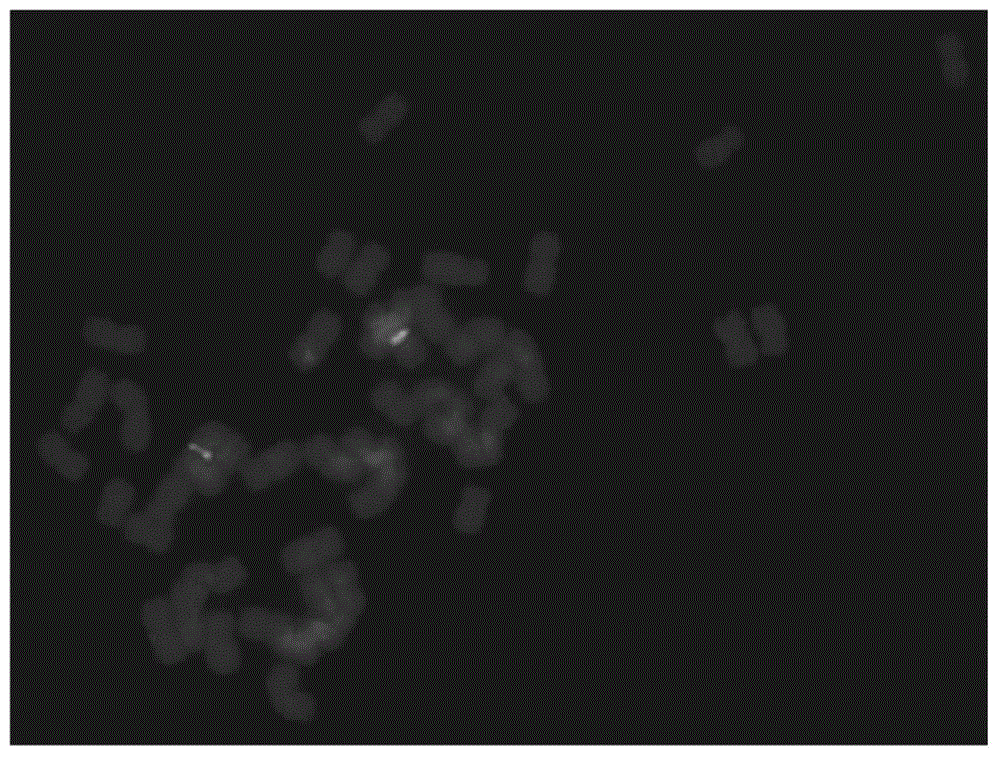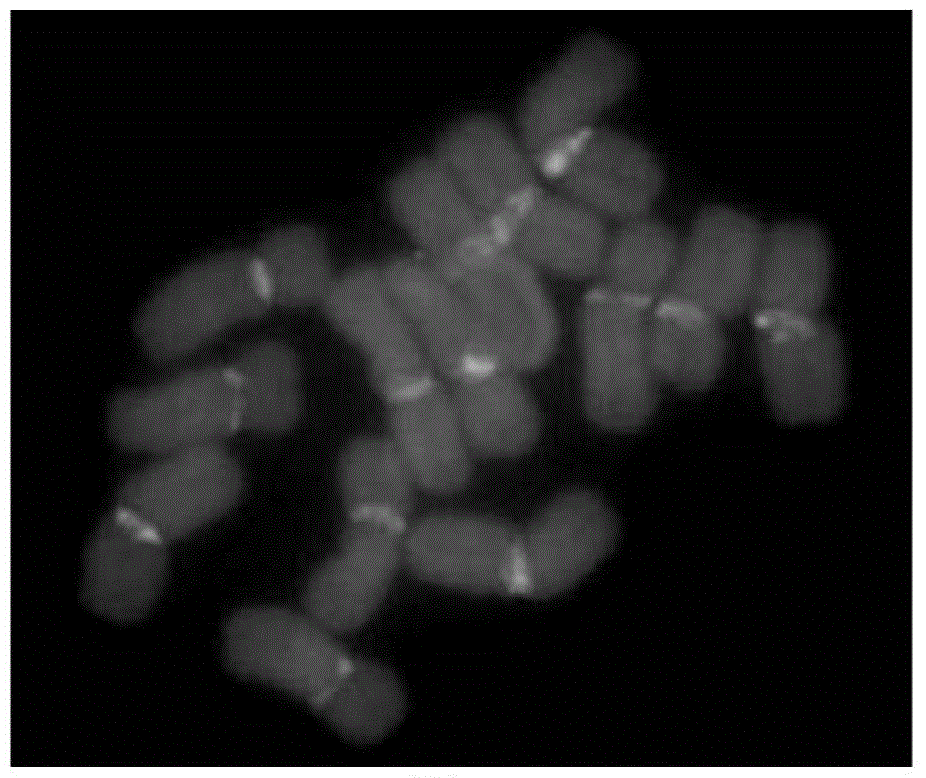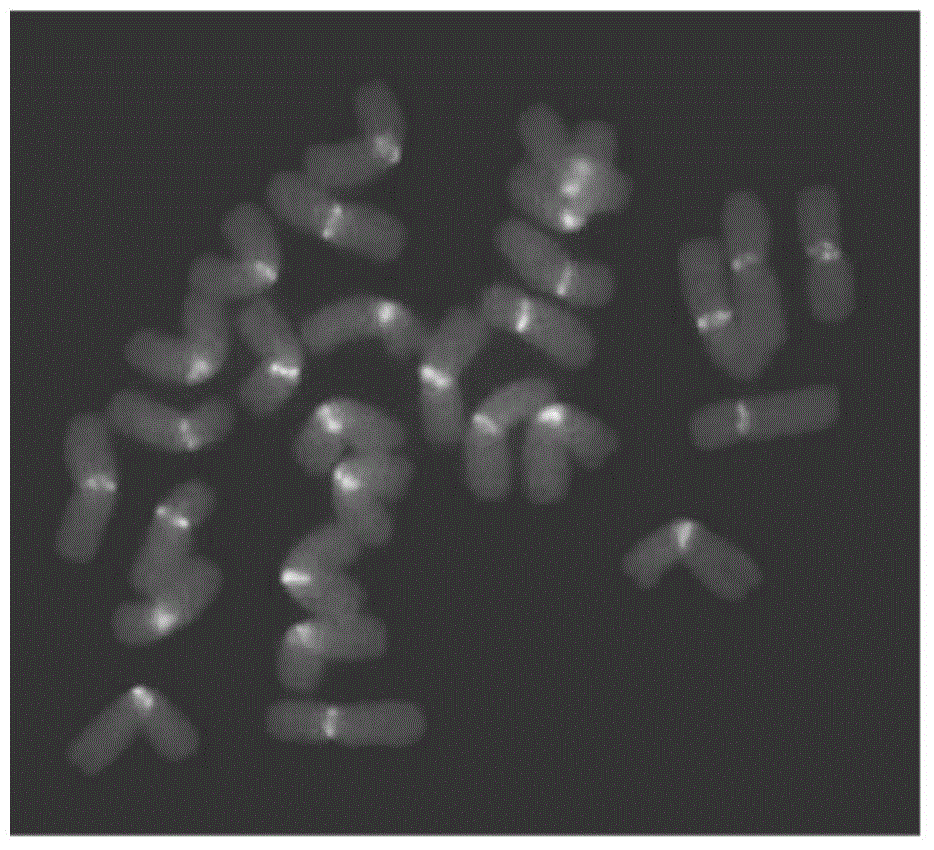Agropyron cristatum centromere specific Gypsy retrotransposon sequence and application thereof
A species-specific, chromosomal centromere technology, applied in the determination/inspection of microorganisms, DNA/RNA fragments, recombinant DNA technology, etc.
- Summary
- Abstract
- Description
- Claims
- Application Information
AI Technical Summary
Problems solved by technology
Method used
Image
Examples
Embodiment 1
[0065] Example 1. Discovery of pAcCR1 and its distribution characteristics on the chromosome of Agropyron chinensis
[0066] 1. Discovery of pAcCR1
[0067] The 6P short arm DNA sequence fragment was obtained by microdissection and DOP-PCR using wheat-Agropyron 6P short arm system as material. These sequences were connected to the pMD19-T vector and introduced into Escherichia coli to obtain a DNA sequence fragment library of the 6P short arm. Differential DNA clones between wheatgrass Z559 and wheat Fukuho were screened by dot hybridization and sequenced.
[0068] After BLAST analysis, there is a DNA fragment with a length of 871bp and a GC content of 46.3%. The DNA fragment is named pAcCR1. As shown in sequence 1 of the sequence table, pAcCR1 has a long terminal (LTR) Gypsy type retrotransposition characteristics of the child.
[0069] pAcCR1 shares 70% sequence similarity with scaffold23384 in the Uraltu wheat genome.
[0070] pAcCR1 is a new centromere sequence of Agro...
Embodiment 2
[0077] Embodiment 2, the development of specific primer pair
[0078] 1. Based on pAcCR1, a specific primer pair was designed as follows:
[0079] AcCR1F (upstream primer, sequence 2 of the sequence listing): 5'-GGCAAGGGAGTAACACAAGC-3';
[0080] AcCR1R (downstream primer, sequence 3 of the sequence listing): 5'-CCCCTCCAATTGTGAAAAGA-3'.
[0081] 2. Extract the genomic DNA of each sample to be tested respectively.
[0082]3. Using each genomic DNA as a template, perform PCR amplification using the specific primer pair obtained in step 1 to obtain PCR amplification products.
[0083] 4. Carry out 1% agarose gel electrophoresis for each PCR amplification product obtained in step 3, the results are shown in Figure 4 .
[0084] Figure 4 Among them, M corresponds to marker, 1 corresponds to Wheatgrass Z559, 2 corresponds to wheat Fukuho, 3 corresponds to wheat-Wheatgrass 6P disomy addition line 4844-12, 4 corresponds to wheat-Wheatgrass addition line 5113, and 5 corresponds to...
Embodiment 3
[0087] Embodiment 3, the specificity of specific primer pair
[0088] 1. Extract the genomic DNA of each sample to be tested.
[0089] 2. Taking each genomic DNA as a template and using a specific primer pair composed of AcCR1F and AcCR1R to carry out PCR amplification to obtain PCR amplification products.
[0090] 3. Perform 1% agarose gel electrophoresis on each PCR amplification product obtained in step 2, the results are shown in Figure 5 .
[0091] Figure 5 Among them, M corresponds to marker, 1 corresponds to wheatgrass Z1842, 2 corresponds to wheatgrass Z559, 3 corresponds to wheatgrass Z1750, 4 corresponds to wheat Chinese spring, 5 corresponds to wheat Fukuho, and 6 corresponds to cultivating einkorn wheat MO 4 , 7 corresponds to durum wheat Jing DR 3 , 8 corresponds to Timofeywheat TI 1 , 9 corresponds to Ae14, 10 corresponds to Y93, 11 corresponds to Y258, 12 corresponds to Ae49, 13 corresponds to Y39, 14 corresponds to RM2161, 15 Corresponds to the cultivat...
PUM
 Login to View More
Login to View More Abstract
Description
Claims
Application Information
 Login to View More
Login to View More - R&D
- Intellectual Property
- Life Sciences
- Materials
- Tech Scout
- Unparalleled Data Quality
- Higher Quality Content
- 60% Fewer Hallucinations
Browse by: Latest US Patents, China's latest patents, Technical Efficacy Thesaurus, Application Domain, Technology Topic, Popular Technical Reports.
© 2025 PatSnap. All rights reserved.Legal|Privacy policy|Modern Slavery Act Transparency Statement|Sitemap|About US| Contact US: help@patsnap.com



